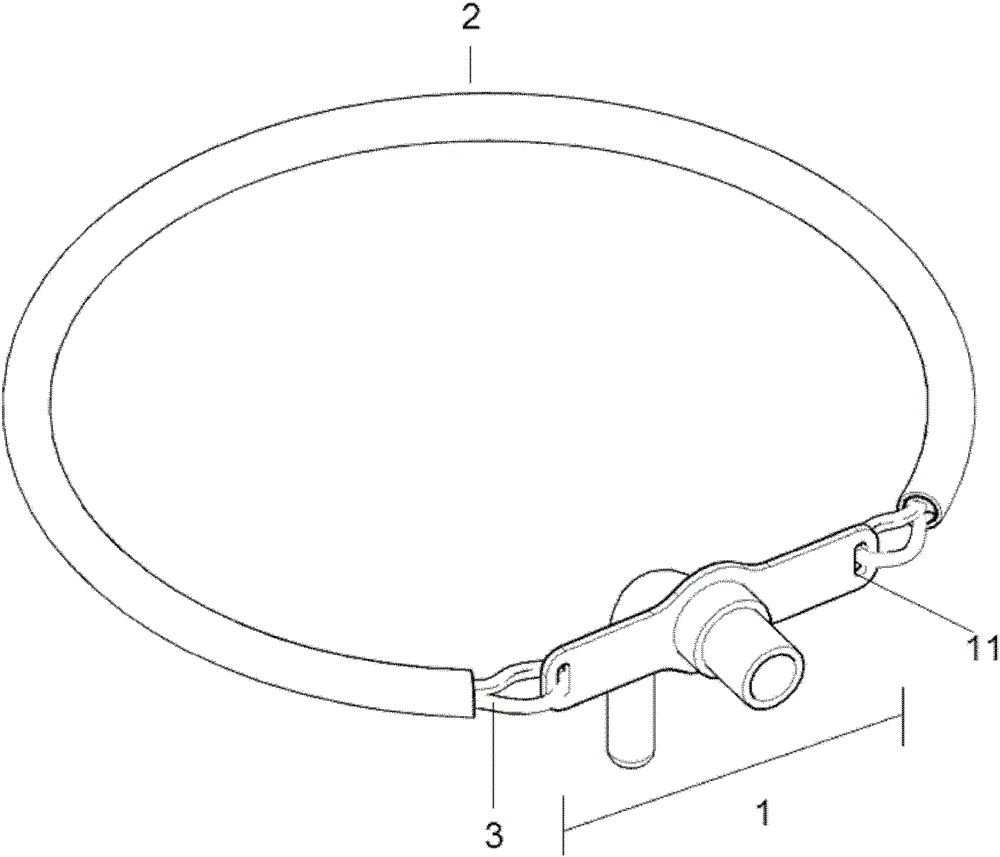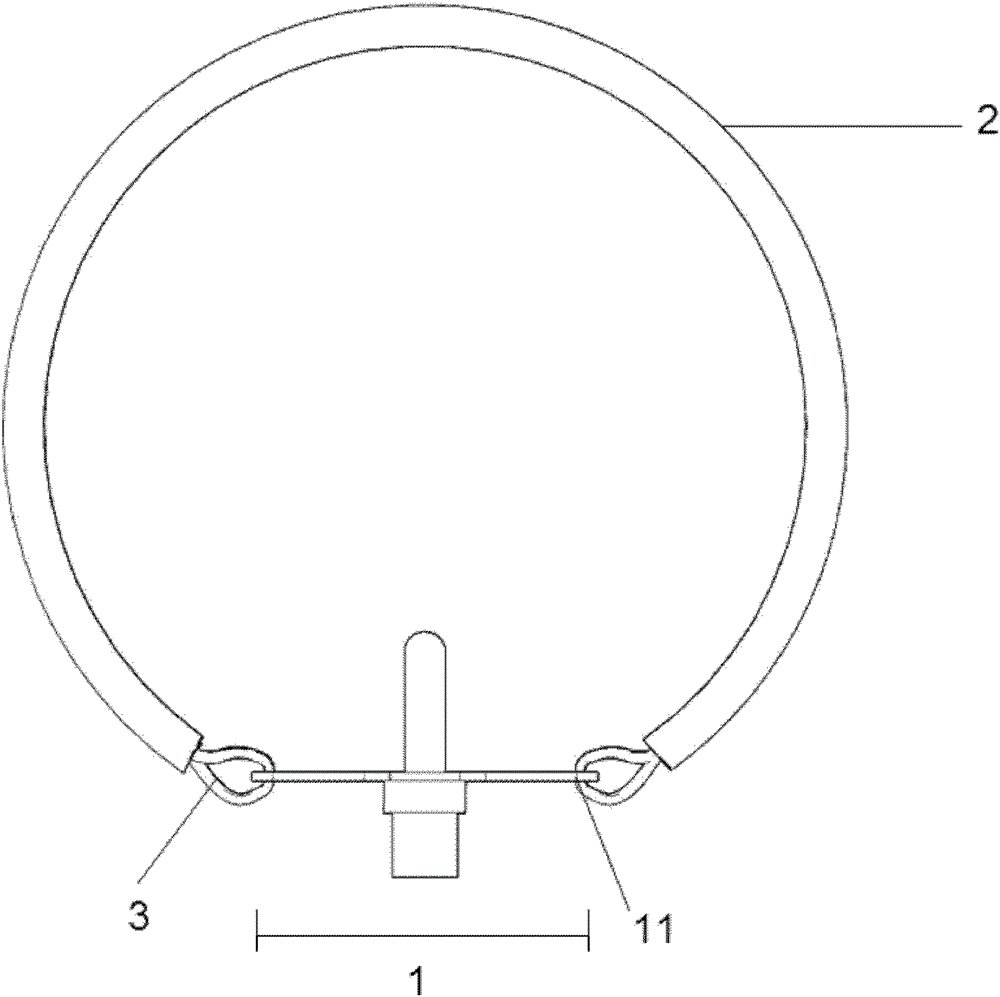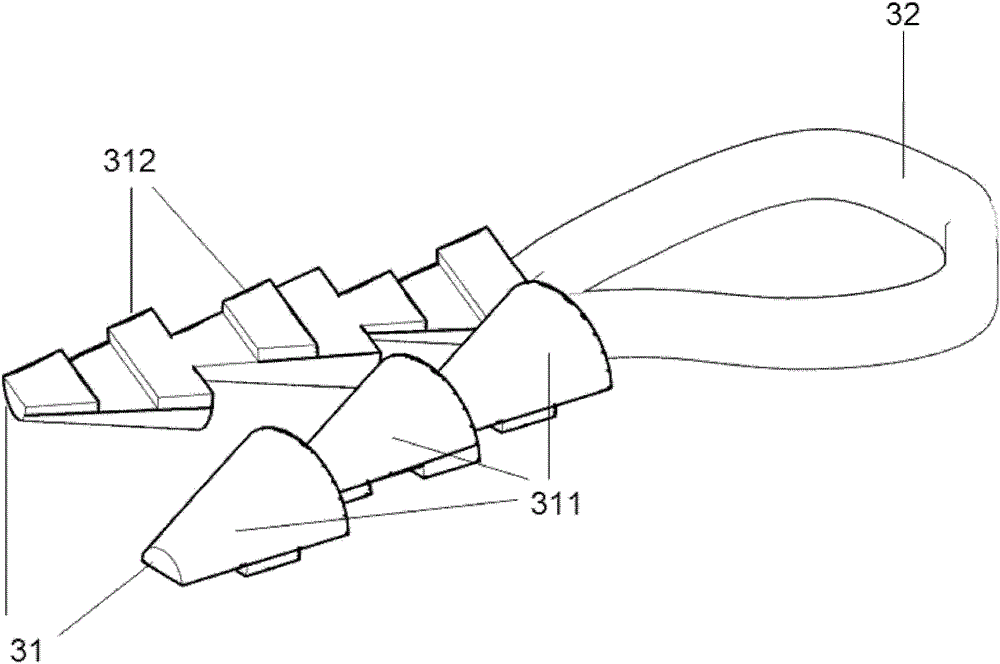Tracheal Tube Fixation Supplies
A technology of tracheal tubes and supplies, applied in the field of medical devices, can solve the problems of increasing the difficulty and mortality of critically ill patients, increasing the workload of medical staff, and increasing the risk of accidental extubation, so as to reduce neck skin or wound damage and Effects on risk of infection, reduction in pain and workload of medical staff, reduction in chance of accidental extubation
- Summary
- Abstract
- Description
- Claims
- Application Information
AI Technical Summary
Problems solved by technology
Method used
Image
Examples
Embodiment 1
[0022] Endotracheal tube fixation supplies, such as figure 1 and 2 As shown, it is composed of a hollow tracheal tube fixing rope 2 with locks 21 inside the tube walls at both ends and two self-locking devices 3. The locks 21 are multi-conical, and the number of locks 21 is 10 on each pipe wall.
[0023] The lock 21 can be tightly locked with the self-locking device 3 , and the self-locking device 3 is connected with the tracheal tube fixing hole 11 on the tracheal tube 1 .
[0024] The tracheal cannula can be selected from the 6#-8# tracheal cannula of Mallinckrodt Company of the United States or RUSCH Company of Germany.
Embodiment 2
[0026] On the basis of the structure of embodiment 1, the tracheal tube fixing device has 6 locks 21 inside the tube wall at each end; the self-locking device 3 is as follows: Figures 3 to 5 As shown, the self-locking device 3 is composed of a connecting part 32 in the middle and self-locking ends 31 at both ends. The two self-locking ends 31 are locked and fixed to each other through the inner trapezoidal self-locking teeth 312 of the inner self-locking ends. A plurality of semi-conical locking teeth 311 on the outside of the lock end are combined with each other to form a multi-conical series integral body, and then the multi-conical series integral body is tightly locked with the lock buckles 21 inside the tube walls at both ends of the tracheal tube fixing rope 2 . There are three semi-conical locking teeth 311 on the outer side of the self-locking end and three trapezoidal self-locking teeth on the inner side of the self-locking end.
Embodiment 3
[0028] When the tracheal tube fixation device of Embodiment 1 or 2 is used clinically, after two self-locking devices 3 pass through the tracheal tube fixing hole 11, the self-locking end 31 is locked by itself, and then the locked self-locking end 31 is inserted into the trachea Both ends of the cannula fixing rope 2 are locked with the lock 21 inside the tube wall, and finally the tracheal cannula fixing rope 2, two self-locking devices 3 and the tracheal cannula 1 form a closed loop and are fixed on the patient's neck.
PUM
 Login to View More
Login to View More Abstract
Description
Claims
Application Information
 Login to View More
Login to View More - R&D
- Intellectual Property
- Life Sciences
- Materials
- Tech Scout
- Unparalleled Data Quality
- Higher Quality Content
- 60% Fewer Hallucinations
Browse by: Latest US Patents, China's latest patents, Technical Efficacy Thesaurus, Application Domain, Technology Topic, Popular Technical Reports.
© 2025 PatSnap. All rights reserved.Legal|Privacy policy|Modern Slavery Act Transparency Statement|Sitemap|About US| Contact US: help@patsnap.com



